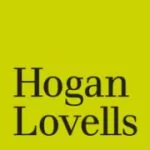On December 3, 2010, the United States Treasury (Treasury) and the Internal Revenue Service (IRS) published Notice 2010-89, requesting public comments regarding the excise tax to be levied on medical devices pursuant to section 4191 of the Internal Revenue Code (Code). Section 4191 was added by the Healthcare and Education Reconciliation Act of 2010 (HCERA), in conjunction with the Patient Protection and Affordable Care Act (PPACA). Comments must be submitted by March 3, 2011. Among other things, stakeholders may want to comment on:
- the definition of a "medical device" for purposes of this tax;
- the risk of dual taxation for products classified as both drugs and devices; and
- the definitions of terms within the exemption from the tax for any medical device "determined by the Secretary to be of a type which is generally purchased by the general public at retail for individual use."
Section 4191 imposes an excise tax of 2.3 percent of the sale price of any "taxable medical device" by its manufacturer, producer, or importer. For purposes of this tax, a "taxable medical device" is defined by reference to section 201(h) of the Federal Food, Drug & Cosmetic Act (FFDCA). Section 201(h) defines a "medical device" as an:
"instrument, apparatus, implement, machine, contrivance, implant, in vitro reagent, or other similar or related article, including any component, part, or accessory, which is--(1) recognized in the official National Formulary, or the United States Pharmacopeia, or any supplement to them, (2) intended for use in the diagnosis of disease or other conditions, or in the cure, mitigation, treatment, or prevention of disease, in man or other animals, or (3) intended to affect the structure or any function of the body of man or other animals, and which does not achieve its primary intended purposes through chemical action within or on the body of man or other animals and which is not dependent upon being metabolized for the achievement of its primary intended purposes."
Eyeglasses, contact lenses, hearing aids, and "any other medical device determined by the Secretary [of the Treasury] to be of a type which is generally purchased by the general public at retail for individual use" are specifically exempted from this definition pursuant to section 4191(b)(2). Section 4221 of the Code also exempts any sales for use in further manufacture or export—either by the manufacturer, producer, or importer, or by a second purchaser—from the reach of this and many other excise taxes imposed under Chapter 32.
Pursuant to the Notice, manufacturers, producers, and importers of medical devices and other interested taxpayers may submit comments on issues to be addressed by the IRS in guidance implementing the excise tax on medical devices. Comments also are specifically requested with respect to the exemption from the excise tax under section 4191(b)(2)(D) for any medical device "determined by the Secretary to be of a type which is generally purchased by the general public at retail for individual use" and the application of existing rules regarding excise taxes on manufacturers under Chapter 32 to the excise tax on medical devices to be imposed by section 4191.
Interested parties may consider submitting comments regarding the following issues that are in need of clarification for purposes of this tax:
- Definition of "Medical Device": For purposes of section 4191, a "taxable medical device" is defined in reference to the FFDCA. However, it is not always clear whether a particular product meets the definition of a "medical device" under the FFDCA. For example, products that provide physiologic data for non-medical purposes (e.g., sports monitors and home infant monitors) and general purpose products that are adapted for a medical purpose (e.g., software used to track patient use of drugs) may or may not be "medical devices" under the FFDCA.
- Risk of Dual Taxation: Related to how "taxable medical device" will be defined is the issue of how products that are potentially both "drugs" and "devices" under the FFDCA (e.g., combination products and devices reimbursed as drugs or vice versa) will be treated. In addition to the excise tax imposed on medical devices, PPACA/HCERA added an annual fee on branded pharmaceutical drugs and biologicals. For purposes of this provision, the definition of a "prescription drug" is defined by reference to the FFDCA. Notably, the FFDCA's definitions of "prescription drug" and "device" are not mutually exclusive. Indeed, there are many products that meet both definitions. It is not likely Congress's intent, however, that these combination products be dually taxed.
- Exemption under 4191(b)(2)(D): Section 4191(b)(2)(D) exempts any medical device "determined by the Secretary to be of a type which is generally purchased by the general public at retail for individual use" from the reach of this excise tax. We note that it is not clear whether devices purchased pursuant to a prescription would be purchased by the "general public" or whether devices sold directly to medical providers would be sold "at retail for individual use." It is also yet to be determined what metric will be used to determine whether a device is "generally purchased" in this manner. Finally, it is unclear whether the Secretary, in determining the types of devices that fall under this exemption, will compile a list of specific, exempt devices or merely establish a list of exempt device "types."
The content of this article is intended to provide a general guide to the subject matter. Specialist advice should be sought about your specific circumstances.

